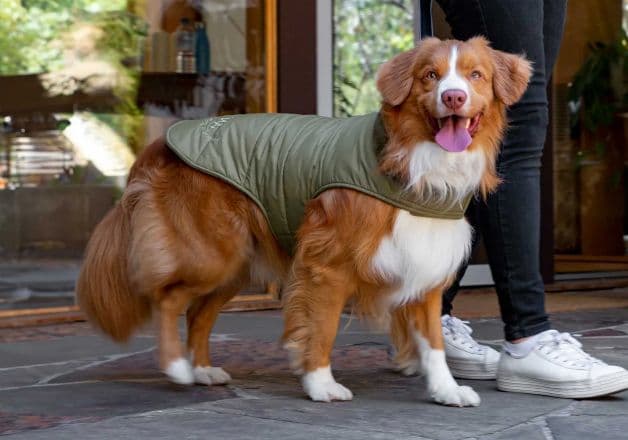
Paddock Horse Rugs: What Makes A Good Horse Rug Last?
Why do some ripstop horse rugs wear better than others?
To the majority of us, one ripstop fabric looks very much like the next. Yet some horse rugs perform better on our horses with a longer life than others - so what's the difference?
While many ripstop fabrics may look the same - they can wear very differently. There are 3 major considerations with ripstop fabric for a horse rug - the actual fabric blend used, the type of loom the fabric has been made on, fabric weight and weave. Let’s look at each factor.
How fabric blends have changed over time
At Caribu, we often get requests for 100% cotton ripstop paddock horse rugs, especially from those who have just gotten back into horses after a long break. For awhile, a long time ago, horse rugs were generally 100% cotton. And the first iterations of polyester rugs often performed terribly. This created a belief for many of us that cotton is king. A lot has changed over the last 10 years, and now, it is hard find a 100% cotton ripstop horse rug.
100% cotton ripstop rugs haven't been around for a long time. Still, many retailers promote them as ‘cotton,’ despite knowing they are not. Some manufacturers even go as far as to use deceptive labels for fabric descriptions on their rugs. In days gone by, 100% cotton horse rugs were not uncommon, but they also shrank or lost their shape easily and didn't wear so well. Other deceptive advertising you may see is rugs advertised as "60% Ripstop". In some cases, this means the ripstop thread is 60% cotton, but the base fabric is 100% polyester!
Over the last decade, there have been huge leaps in fabric production technologies. New generation ripstops in polyester resemble cotton in just about every aspect. The majority of ripstop fabrics are now either 100% polyester (but look and feel like cotton) or a blend of cotton and polyester. At Caribu, we use an approximate 70/30 blend in our rugs (70% polyester, 30% cotton). This ratio gives the rug both strength and breathability, as higher polyester ratios can make the rug too warm for summer use.
Fabric looms
Fabric composition is just one part of getting a good, long-wearing fabric. The majority of paddock ripstop horse rug fabric is produced in India - as much as 90%. There can be a huge variance in the types of looms used, from low-tech hand-tensioned looms (still very common for cheaper fabric) to high-end computerised tensioners (we use computerised machinery). On the older manual tensioned looms, it requires an operator to keep monitoring and tensioning the fabric. This fabric often has loose threads or impurities in the weave. Automated looms, by contrast, create superior fabrics with a tighter weave.
To check if fabric has been made on a modern loom, grab some fabric between thumb and forefinger. Try to separate the threads on one axis. On hand looms, you can often part one axis, but on a modern loom, both axes will be tight and unable to separate.
Fabric weight and weave
The thickness, or GSM (grams per square meter), of the fabric plays a huge role in performance. At Caribu, we use a 300 GSM fabric in our cotton horse rugs, which is strong but still cool enough for our hot summers. With increasing raw material costs, some manufacturers use thinner fabrics that may look similar but wear very differently on your horse.
A guide to fabric weights and suggested use in a cotton/polycotton paddock rug:
-
160 GSM - 190 GSM
This is as light as you can go with a horse rug. Fabric of this weight is used in very light summer rugs - traditionally flag material. It’s lovely and cool but not very strong. -
200 GSM - 270 GSM
This range is where many 'cheaper' ripstop fabrics appear. Many big manufacturers offer 'budget' rugs in this fabric. The price is right, but durability as a paddock rug may be disappointing. -
280 GSM - 310 GSM
This is the ideal range for a good quality, long-lasting ripstop fabric suitable for the hottest months. The strength is good, and the rugs will hold their shape and withstand the elements. -
350 GSM+
At this weight, you move into the stiffer canvas-type fabrics.


